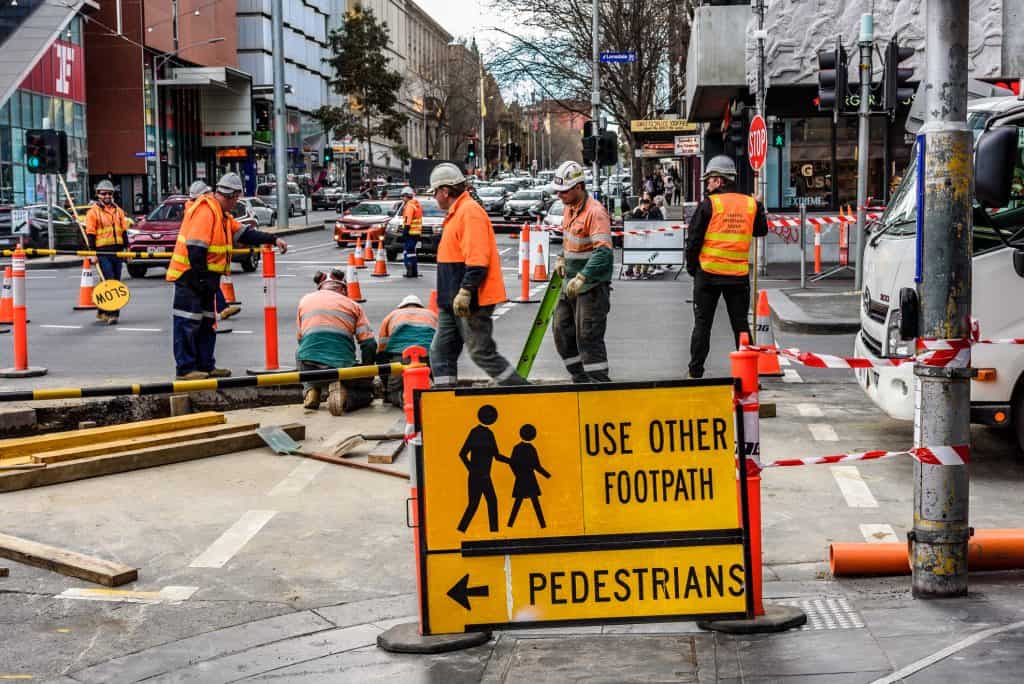Some time ago I had a run-in with a worker who repeatedly chose not to wear his hard hat. He reasoned that as there were no overhead or head-high hazards in the work area the personal protective equipment (PPE) was not necessary. He applied what some would call a risk-based decision and he was right. But the worker was dismissed from the project (not by me) over his decision and because of his belligerence and verbal abuse over the matter. The reality was that he showed disrespect to his employer (a subcontractor) and disregard to the safety rules of the contractor thereby eroding the safety culture that the contractor was trying to establish and maintain in order to, ultimately, satisfy the client.

There has been an increasing amount of discussion in the occupational health and safety (OHS) sector about trust. There is little chance of achieving any change in a workplace without first of all establishing trust between the stakeholders, or at least a little bit of trust. But part of this trust is also respect. And part of this trust is that it should be earned… by everyone.
To some, the example above would be an example of the ridiculousness of OHS management and of one-size-fits-all safety rules. The work tasks being undertaken by this one worker may not have justified the wearing of a hard hat BUT the wearing of a hard hat indicated to the contractor and the client a willingness to comply with the site safety rules more generally. In short, it would have shown respect for the employer and workplace safety stakeholders.
Many of the objections to OHS practices use single incidents as examples of absurd decisions. The bigger context is often hard to see and is rarely explained and communicated to individuals by safety managers and professionals. People do not like to do things without first understanding the reason for doing something. We need to explain that if an OHS inspector is driving past a worksite and sees everyone compliant with OHS rules, the inspector is likely to continue to drive past. If they see someone on the railings of an elevated work platform at height, for instance, and without a harness the inspector will probably stop the car, very quickly.
The application of “blanket” OHS rules is contentious as in some circumstances on almost all workplaces, there are times when the rule cannot be justified in relation to the risk of injury. Such rules are beloved by clients, especially Government clients, as they establish a benchmark that is easy to inspect and enforce. And “easy” is the most important word here. What is easy for the client to inspect and for the company to impose and manage can also devalue the importance of OHS.
A major OHS principle is the elimination or minimisation of harm. But to take the dismissed worker’s perspective, where was the potential harm? On the same site, if that worker had been working on the roof, no hard hat would have been required, because the client and company applied a risk-based decision in that circumstance. So why not when on the ground? The ground level worker saw the double standard in safety and called it out. In many ways, that worker was talking safety sense, but it did not matter because the way the construction contract was written, the way the safety benchmarks were agreed, the way the client wanted an assurance of OHS and, more importantly, contractual compliance, meant that hardhats were required even when they were not justified by the risk. But they were justified by the easiness applied to OHS by all levels of the project.
In the long-term, blanket OHS rules erode trust in OHS and the application of it by those who have the primary responsibility. Blanket rules encourage the tick-the-box approach to safety compounding the situation that the clients, through their contracts, criticise.
The worker at the start of this article lost his job on that project for not wearing a hardhat, which was against the OHS rules, and for swearing, arguing and abusing other staff in front of the client’s representative, which was against general company rules and codes of conduct. But was he less safe when doing that task? Probably not, but he was non-compliant.

Hi Kev – I’d be prepared to wager the fella lost his job for several contributing things, in addition to choosing not to wear a hard hat. Wouldn’t mind betting his choice to ditch the skid-lid was just the straw which broke the camel’s back.
And WRT dudes choosing not to wear hard-hats (behaviour that I used to bump into way back in the day far, far more frequently than I do now, I’ll admit) I try to flick the script and discuss the hat – or lack-thereof, as the case may be – as being a component of a ‘uniform’, for want of a better term. I try not to make the discussion about safety per se, or note anything about the potentially protective function the hat could offer. It becomes about uniform; and the fact that my man’s the odd one out (it’s only ever one. And it’s almost always a male); and that by electing not to don the hat he’s providing an immediately obvious indicator to anybody with a set of eyes that he may not think he’s part of the team.